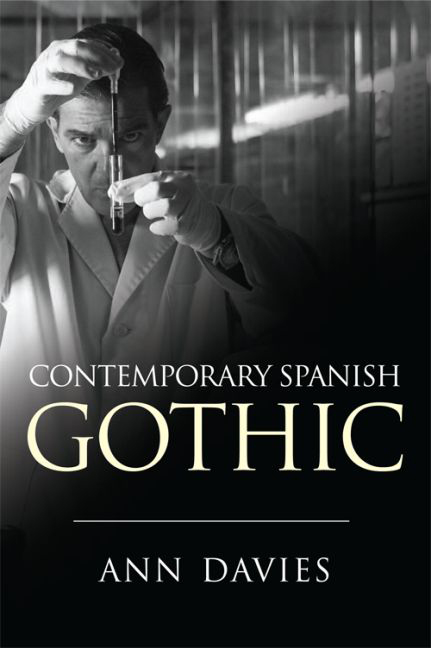Book contents
- Frontmatter
- Contents
- List of Figures
- Acknowledgements
- 1 Introduction
- 2 Heritage Gothic: Goya Biopics
- 3 The Gothic Bestseller: The Circulation of Excess
- 4 The Gothic House: Problematising the National Space
- 5 The Gothic Camera: Javier Aguirresarobe at Home and in Hollywood
- 6 Gothic Medicine: Written on the Body
- 7 Conclusion
- Filmography
- Bibliography
- Index
2 - Heritage Gothic: Goya Biopics
Published online by Cambridge University Press: 27 April 2017
- Frontmatter
- Contents
- List of Figures
- Acknowledgements
- 1 Introduction
- 2 Heritage Gothic: Goya Biopics
- 3 The Gothic Bestseller: The Circulation of Excess
- 4 The Gothic House: Problematising the National Space
- 5 The Gothic Camera: Javier Aguirresarobe at Home and in Hollywood
- 6 Gothic Medicine: Written on the Body
- 7 Conclusion
- Filmography
- Bibliography
- Index
Summary
In the previous chapter, Goya was mentioned in passing as a possible purveyor of the Gothic, recognised as such by scholars. Goya's work responded very much to the political and social situation in the Spain of his time but much of his work has resonated beyond its original context and he continues to fascinate today. A new exhibition in Britain of his portraits, for instance, drew strong and adulatory press interest (see, for example, Coomer 2015, Cumming 2015, Sooke 2015). Goya also appears in popular literature. The novel After Goya by Haarlson Phillipps (2011: complete with facsimile of Goya's signature) constructs a thriller narrative around two rediscovered minor pieces by Goya. Memory of Bones by Alex Connor (2012: with frontispiece self-portrait of Goya in top hat) is another thriller that builds on the real-life mystery surrounding the removal and disappearance of the dead Goya's head from his body, a fact that, on its own, would place Goya in any Gothic pantheon. Scott Mariani's The Lost Relic (2011) has its hero pursue the perpetrators of a robbery that included a Goya sketch. Even Dan Brown used the artist's name to label a ship heading for the Arctic Circle in Deception Point (2006). In these examples, Goya retains an association with the dark side, with crime, danger and monstrosity, in other words with the Gothic. Goya also becomes a free-floating signifier, a label that can be easily and superficially attached to any story. If, in the previous chapter, I spoke of the deterritorialisation and indigenisation involved in cultural exchange, it seems that, in Goya's case, he is easily deterritorialised and incorporated into any story that wants him; and yet his art derived from the very specific context of the weakness of the Bourbon monarchy at the end of the eighteenth century, the invasion and occupation by Napoleon's forces, and the restoration of an anti-liberal Bourbon monarchy that ensured Goya's flight into exile.
This chapter considers Goya as a form of heritage that demonstrates his life and work to be a nexus for contemporary Spanish Gothic, exemplifying both inward and outward stances that celebrate Spain's probably best-known Gothic artefacts while simultaneously deterritorialising them.
- Type
- Chapter
- Information
- Contemporary Spanish Gothic , pp. 25 - 53Publisher: Edinburgh University PressPrint publication year: 2016



